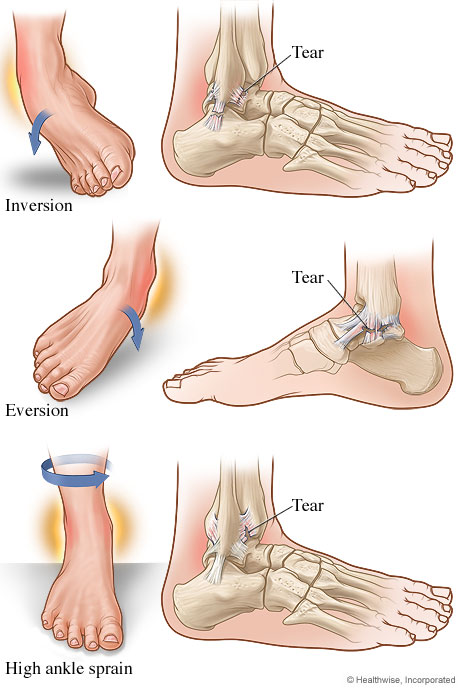Sprain
What is a sprain?
A sprain is an injury to the tough ropey fibers (ligaments) that connect bone to bone.
Symptoms of a sprain may be mild or severe, and they may sometimes be mistaken for a broken bone (fracture) because some injuries can cause a sprain and a fracture in the same area.
- First-degree sprains stretch the ligaments but do not tear them. You may have mild to moderate swelling and pain but the joint is stable, does not feel loose or wobbly, and you are able to move normally (although it is likely to be painful).
- Second-degree sprains partially tear the ligaments. You may hear or feel a pop or snap at the time of the injury. Moderate to severe pain and swelling may restrict your movement. The joint may look bruised and you may have mild to moderate joint instability.
- Third-degree sprains completely tear the ligaments. You will usually hear or feel a pop or snap at the time of the injury. Mild to severe pain, swelling, and bruising may be present. Symptoms are sometimes less with a complete tear than with a partial tear. Your joint will feel loose or wobbly and you may hear a grating sound when you try to move the joint. A bulge may appear at the site of a complete tear. Change of sensation, such as numbness or tingling, may be present.
Treatment for a sprain includes rest (immobilization), ice, compression, and elevation. While a minor sprain will often heal well with home treatment, a moderate to severe sprain may require medical evaluation and treatment with a cast or splint, physical therapy, medicine, or surgery. Recovery time for a sprain varies depending on a person's age and health and the location and severity of the sprain.
Symptoms
Types of Ankle Sprains

An inversion injury is the most common cause of an ankle sprain and occurs when the ankle rolls outward and the foot turns inward. It results in stretching and tearing of the ligaments on the outside of the ankle.
Less commonly, the ankle rolls inward and the foot outward in an eversion injury, damaging the ligaments at the inside of the ankle.
The high ankle sprain is the least common. It can happen when the foot is forced to rotate toward the outside (away from the other foot), or when the foot is planted so it can't move and the leg is rotated toward the inside.
Diagnosis
Treatment
How to Wrap a Sprained Ankle
Copyrighted material adapted with permission from Healthwise, Incorporated. This information does not replace the advice of a doctor.
